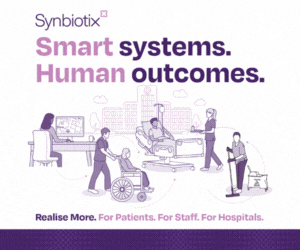NHS Providers and Nuffield Trust have both warned of a bleak start to 2019 for England's hospitals without more realistic performance targets and proper recognition of the financial situation facing most Trusts.
The statements followed the publication of the Quarterly Performance figures by NHS Improvement, which revealed that between July and September 2018 hospitals admitted more emergency patients and discharged more patients from their services sooner. However, largely due to the increase in demand, waiting times for planned treatment increased and the sector was £1.23 billion in deficit at the end of the quarter.
Between July and September 2018 there were 940 more emergency admissions per day than during the same quarter in 2017 - an increase of 4.3%. NHS staff treated more emergency patients within the four-hour A&E standard - 5.52 million patients compared with 5.34 million for the previous quarter. However, high A&E demand meant that people had to wait longer for planned treatment. The number of people waiting more than one year for treatment at the end of September was 3,156 compared to 1,778 for the same period in 2017.
Trusts have achieved £1.2 billion in efficiency savings, through better procurement of everyday items and moving from agency staff to bank staff. In spite of this Sally Gainsbury, Senior Policy Analyst at Nuffield Trust warns that the NHS faces the beginning of the New Year "underwater financially."
"NHS Trusts will need a substantial recurrent funding boost, as well as additional emergency support for at least the next three years, limiting the funds available for expensive new commitments in the long term plan," Sally says.
Furthermore, she questions the deficit figures, saying: "The projected deficit of £558m reported includes £2.45bn of emergency funding, as well as some very optimistic assumptions about extra efficiencies to be made. So despite making some impressive savings so far this year, NHS providers are struggling to reduce the underlying gap between their regular, predictable income and their day-to-day running costs. We calculate this underlying deficit will be around £4.2bn by the end of the financial year."
Chief Executive of NHS Providers, Chris Hopson says: “Once again, Trusts have delivered a heroic performance, treating more patients than ever before within the A&E target, improving discharge rates and continuing to deliver stretching levels of financial savings.
“But the reality is that, however hard Trusts work, they cannot currently keep up with the growth in demand for care. Yet again, the most recent NHS England performance data recorded the highest level of emergency admissions of patients in A&E since records began and this is putting severe pressure on beds and services across health and care even before the busy winter period. Mental health, community and ambulance Trusts report similar levels of unrelenting demand increases and resulting pressure on service delivery. These pressures are contributing to increasing delays for patients and service users, while creating an intolerable working environment for many staff. All Trusts are warning that, despite improvements, this coming winter is likely to be more challenging than the last.
“We have to be honest about the demand and workforce pressures in front of us and what it will take to meet these challenges. And we have to stop setting Trusts over ambitious performance and financial targets that they cannot meet, despite best efforts. However much we want to focus on new commitments and NHS transformation, we have to get back to delivering the right quality of care within the allocated funding. That means devoting the right amount of recent NHS funding increases to recovering constitutional performance standards and eliminating ongoing provider financial deficits.
“NHS Improvement rightly argues that the new NHS long term plan must reset NHS performance. This means Trusts must be given realistic financial and operational performance targets next year that they can actually deliver. They must be properly funded to break the current cycle of ever worsening performance. And we still need more urgent action to address workforce shortages.”
Workforce shortages are a continuing worry. The figures show that the number of vacancies fell to 102,821 at the end of September compared to 107,463 at the end of June. Nuffield Trust says that 10,000 of these vacancies are not even being filled by temporary staff. "This raises real concerns about patient safety and suggests there is unsustainable pressure on NHS staff," Sally warns.












